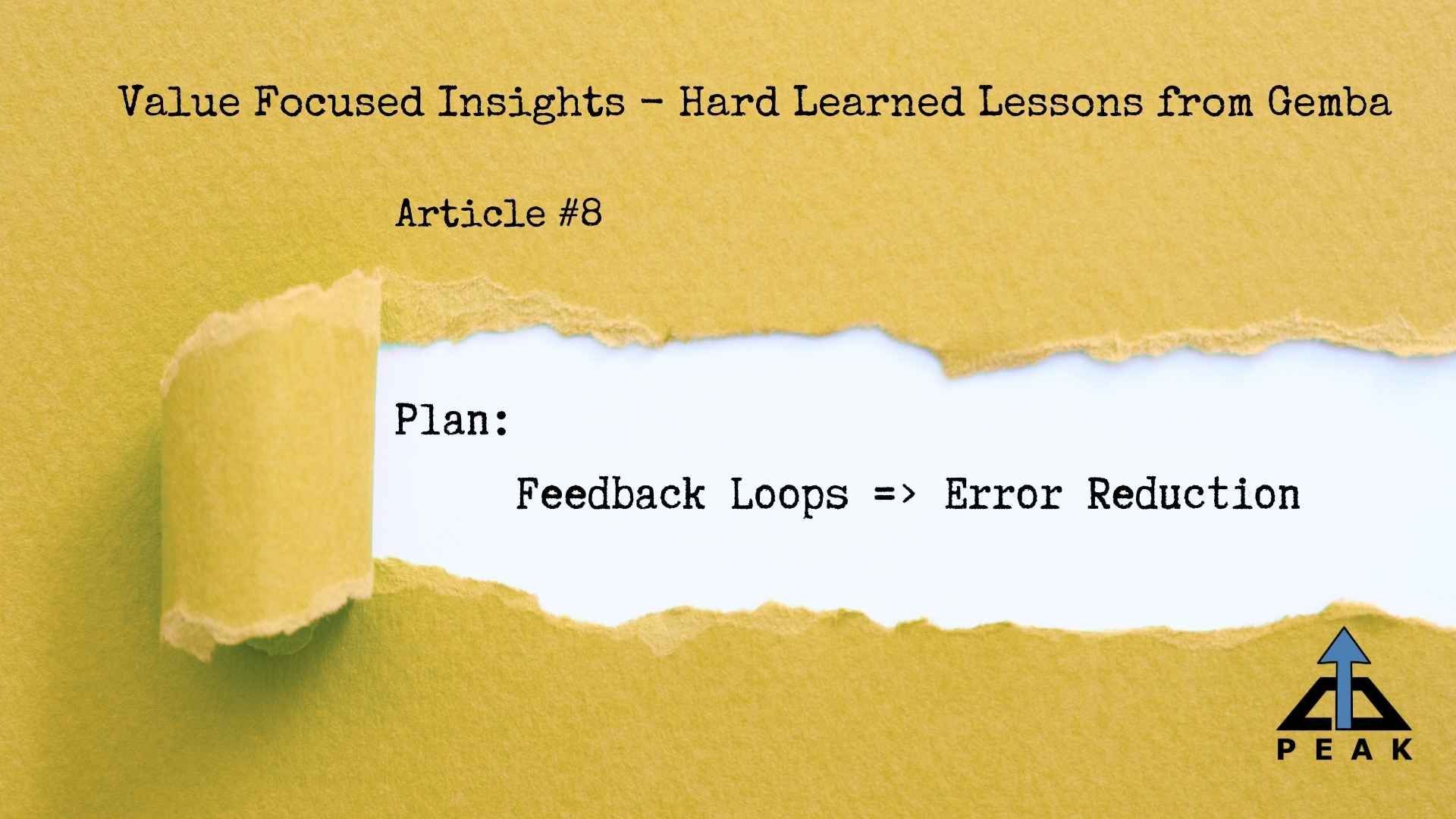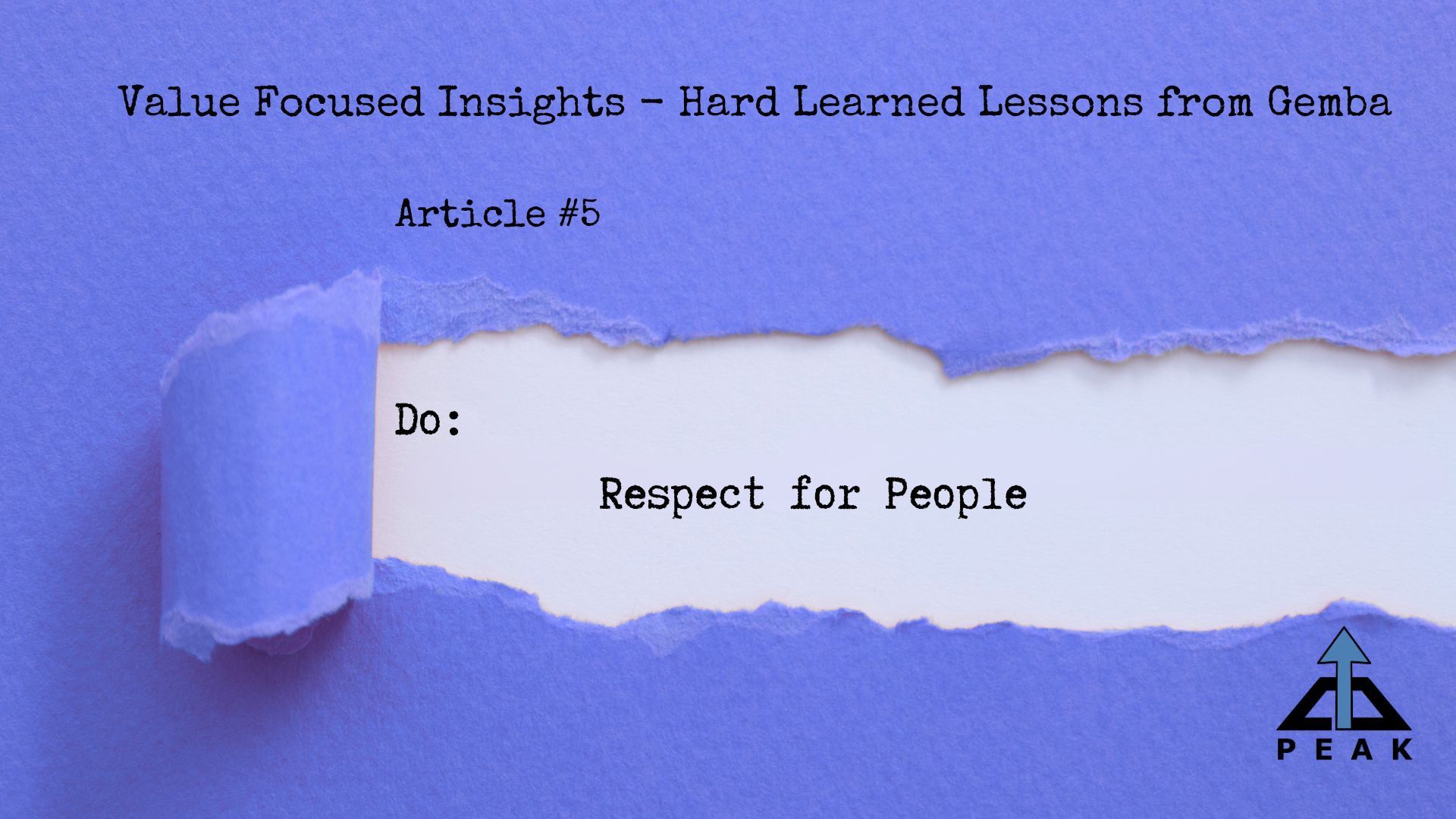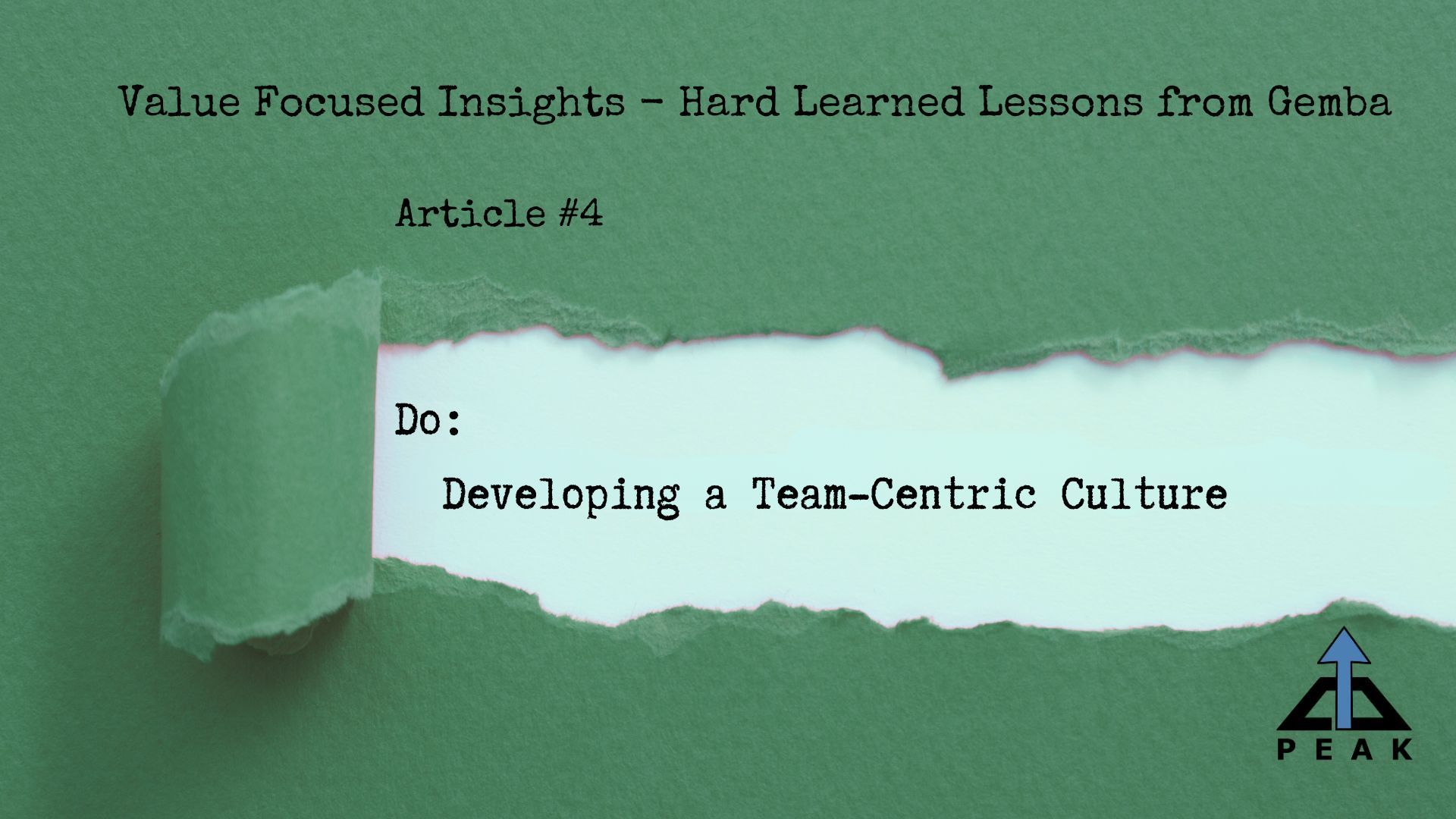Value Focused Insights - Facts Over Opinions
Tim Upchurch
Imagine the stakes: a critical issue surfaces in your value stream, threatening quality, flow, and customer satisfaction. The clock ticks, resources deplete, and every moment the problem remains unsolved, your organization is caught in a costly web of workarounds and compromises. It's all hands-on deck to execute quick and effective problem-solving.
So, how does your team meet the challenge and get to true root cause quickly and restore operations back to the normal levels? We'll unravel some common pitfalls —from the blame game, leadership biases and the perilous allure of hearsay and opinions. Join us on this exploration - of why, in your quest for solutions you need to demand a steadfast commitment of prioritizing facts over opinions.

Act: Choose Facts over Opinions
Picture this: an issue disrupts one of your crucial value streams. It's a complex problem, possibly impacting quality, flow, productivity, or safety. Each moment it goes unsolved, resources are drained in workarounds, and the specter of eroding customer credibility looms. Your team has the skills and certifications, but how effective are they in real-world problem-solving scenarios?
Training vs Reality:
Many organizations invest in extensive problem-solving training, earning their team members impressive plaques. But when faced with a real issue, do these teams reach for the tools they've mastered? The gap between training and application often reveals itself when the pressure is on. It's not just about having the tools; it's about using them effectively.
The Discipline Dilemma:
Disciplined problem-solving isn't just a process; it's a mindset. Effective teams follow a disciplined approach, ensuring that the process is not just a formality but a powerful guide. The discipline lies in adhering to a structured path, avoiding shortcuts that might provide temporary relief but fail to address the root cause.
When your business is in chaos - it is not the time to wing it. Show your team that you will stick to your processes and do what you said you would do. Urgency is fine, but abandoning the scientific method and shooting from the hip is not an effective strategy over the long run.
The Mirage of Responsibility:
One common stumbling block is the interdepartmental or functional blame game. Certain leaders or teams may be more concerned with finger-pointing than collaborative resolution. It's not about who's responsible; it's about solving the problem collectively and fortifying the system against future disruptions. Quickly and strongly stamp down this behavior or battle lines will be drawn and disrupt any chance of impartial investigation.
Leadership Biases and Blind Spots:
Leadership plays a crucial role, yet biases and preconceived notions can lead investigations astray. If leadership believes 'X' is the problem, the entire focus might shift, missing the trail of actual clues. Effective problem-solving requires a commitment to follow the evidence, not assumptions. Don't direct on hunch. Make sure your team is following the process - this may require coaching. It's never bad to ask - "How do you know that?"
The Snare of Hearsay:
In the world of problem-solving, hearsay is a dangerous guide. Using it to direct the team is akin to sending them on a snipe hunt — a wild goose chase that wastes time and resources. Real solutions emerge from diligent observation, data analysis, and following the trail of evidence. All relevant data should be confirmed by the team at gemba. Don't let the tail wag the dog on this one.
The Dangers of "I Just Know It Is...":
"I just know it is..." is a phrase that echoes through organizations facing challenges. While intuition has its place, it shouldn't replace a systematic investigation. What seems obvious might be a symptom, not the root cause. Effective problem-solving demands a willingness to question assumptions. Also beware of how your data systems can be a source of fog - this can lead to poor interpretations or used to justify positions. Understand what systems are insufficient and correct them today, before you are forced into dealing with bad data.
Conclusion: Choose Facts Over Opinions
The landscape of problem-solving is intricate, filled with pitfalls and distractions. To emerge successfully, teams must rise above blame games, leadership biases, and the allure of hearsay. Embracing a disciplined, evidence-based approach ensures that problem-solving isn't just a process — it's a journey toward lasting solutions. The effective problem solver doesn't choose to chase shadows; they navigate the trail of facts - evidence to illuminate the path forward.
Peaks and Valleys.....












